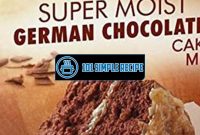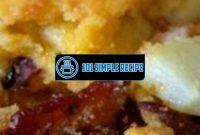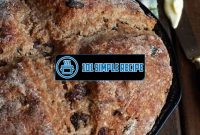If you’re looking for a delicious and healthy bread recipe that will satisfy your cravings while still providing you with valuable nutrients, then you’re in luck! We’ve got the perfect solution for you: a 100% whole wheat bread recipe that is sure to become your new go-to. With this recipe, you can enjoy the natural goodness of whole grains and the amazing taste of freshly baked bread all at once. Plus, it’s incredibly easy to make, so even if you’re not the most experienced baker, you can still achieve impressive results. So put on your apron, roll up your sleeves, and get ready to dive into the delightful world of homemade whole wheat bread!

The Benefits of 100% Whole Wheat Bread
Discover the numerous advantages of baking and consuming 100% whole wheat bread. Not only does it offer improved nutrition, but it also provides increased fiber intake to support a healthy diet.
Health Benefits of Whole Wheat Bread
When it comes to your health, opting for 100% whole wheat bread can be a game-changer. Unlike refined white bread, which undergoes a process that removes the bran and germ, whole wheat bread retains all parts of the grain, making it a more nutritious choice. This means that consuming whole wheat bread contributes to a lower risk of chronic diseases, such as heart disease, type 2 diabetes, and certain types of cancer.
Whole wheat bread is rich in essential nutrients and vitamins, including vitamin B, vitamin E, magnesium, and zinc. These nutrients play a crucial role in maintaining overall health and well-being. Additionally, whole wheat bread contains antioxidants that help protect your body against damage from harmful free radicals. These antioxidants contribute to a stronger immune system and improved overall health.
Nutritional Value of Whole Wheat Bread
Whole wheat bread is packed with essential nutrients that are vital for maintaining a balanced diet. It contains high levels of dietary fiber, protein, and complex carbohydrates. These components provide long-lasting energy, keeping you satiated and focused throughout the day.
The fiber content in whole wheat bread is particularly noteworthy. Fiber aids in digestion, prevents constipation, and promotes regular bowel movements. Additionally, it helps regulate blood sugar levels by slowing down the absorption of glucose into the bloodstream. This makes whole wheat bread an excellent choice for individuals with diabetes or those who are looking to maintain stable blood sugar levels.
The Role of Fiber in Whole Wheat Bread
Fiber plays a crucial role in promoting a healthy digestive system. It adds bulk to your stool and stimulates regular bowel movements, preventing constipation and promoting overall gut health. Additionally, consuming an adequate amount of fiber through foods like whole wheat bread can help reduce the risk of developing digestive disorders, such as hemorrhoids, diverticulosis, and colorectal cancer.
Furthermore, fiber acts as a prebiotic, providing fuel for the beneficial bacteria in your gut. These bacteria play a vital role in supporting a healthy immune system and protecting against chronic inflammation and disease. By incorporating whole wheat bread into your diet, you can support the growth of these beneficial bacteria and promote a healthier gut microbiome.
In conclusion, 100% whole wheat bread offers a range of benefits that contribute to an overall healthier lifestyle. From improved nutrition and increased fiber intake to supporting a healthy digestive system, there are plenty of reasons to incorporate this delicious and nutritious bread into your daily diet.
If you’re interested in trying out different types of recipes, you might enjoy our weight loss recipe or our dog food nature’s recipe. These recipes are not only delicious but also healthy options for your diet and your furry friends!
The Science Behind 100% Whole Wheat Bread
In this section, we will delve into the science behind the process of making 100% whole wheat bread and explore the key differences between whole grain flour and refined flour. Understanding these aspects will not only help you appreciate the health benefits of whole wheat bread but also enhance your baking skills.
Understanding Whole Grain Flour
Whole grain flour is derived from grinding the entire kernel of wheat, including the bran, germ, and endosperm. This means that it contains all the nutrients and fiber naturally present in the grain. Consequently, whole grain flour is rich in vitamins, minerals, antioxidants, and dietary fiber that are essential for maintaining a healthy diet.
Key Points:
- Whole grain flour contains the entire wheat kernel, including the bran, germ, and endosperm.
- It retains all the essential nutrients, vitamins, minerals, antioxidants, and dietary fiber.
- The high fiber content aids digestion and can help regulate blood sugar levels.
The Art of Baking with Whole Wheat Flour
Baking with whole wheat flour requires a slightly different approach compared to using refined flour. The unique properties of whole wheat flour, such as its higher protein content and coarse texture, can affect the texture and rise of the bread. However, with the right techniques, you can achieve delicious and nutritious whole wheat bread.
Key Points:
- Whole wheat flour has a higher protein content, which contributes to the bread’s structure and texture.
- The coarse texture of whole wheat flour may require additional liquid to ensure proper hydration of the dough.
- Kneading the dough thoroughly helps develop gluten, resulting in a better rise and texture.
- Allowing the dough to rest and rise adequately enhances the flavor and texture of the final loaf.
Comparing Whole Wheat and Refined Flour
When it comes to health benefits, whole wheat flour outshines refined flour. Refined flour undergoes a process that removes the bran and germ, stripping away many essential nutrients. As a result, refined flour lacks the same nutritional value as whole wheat flour.
Key Points:
- Whole wheat flour retains all the essential nutrients, while refined flour loses a significant portion of them.
- Whole wheat bread is higher in fiber, which aids digestion and promotes a feeling of fullness.
- Refined flour may cause spikes in blood sugar levels due to its lower fiber content.
- Whole wheat bread offers a more satisfying and nutrient-dense option for those seeking a healthier diet.
By understanding the science behind 100% whole wheat bread and the differences between whole grain and refined flour, you can make informed choices about your baking ingredients. Incorporating whole wheat flour into your bread recipe not only adds a delicious element to your creations but also boosts their nutritional value. So, get ready to bake your way to a healthier and tastier loaf!
If you’re looking for other delicious bread recipes, you may want to try our White Castle recipe or our ranch oyster crackers recipe. These recipes are easy to follow and will surely satisfy your cravings!
Tips for Perfecting Your Whole Wheat Bread Recipe
When it comes to baking 100% whole wheat bread, there are some essential strategies and techniques that can help you achieve a perfect texture, taste, and appearance. Whether you’re a seasoned baker or a novice in the kitchen, these tips will ensure that your homemade bread turns out deliciously healthy every time.
Kneading and Proofing Techniques
To create a light and airy whole wheat bread, proper kneading and proofing techniques are crucial. Kneading helps develop the gluten in the dough, giving it structure and elasticity. To achieve the best results, follow these steps:
- Start with a well-hydrated dough. Whole wheat flour absorbs more moisture than all-purpose flour, so it’s important to use the right amount of water to ensure the dough is not too dry or too sticky.
- Knead the dough thoroughly. Whole wheat dough requires a longer kneading time compared to white bread dough. Aim for at least 10-15 minutes of kneading to develop the gluten fully and improve the bread’s texture.
- Allow the dough to proof properly. During the proofing process, the dough ferments and rises, developing its flavor and improving its texture. It’s essential to give the dough enough time to rise adequately. This usually takes around 1-2 hours, depending on the room temperature. ️
Enhancing Flavor and Texture with Additions
While whole wheat bread is delicious on its own, you can enhance its flavor and texture by adding various ingredients. Here are a few additions to consider:
- Honey or maple syrup: Adding a sweetener like honey or maple syrup not only adds a touch of sweetness but also improves the tenderness of the bread. Plus, the natural sugars help with browning during baking.
- Nuts and seeds: Incorporating nuts and seeds into your whole wheat bread adds an enjoyable crunch and boosts its nutritional profile. Consider adding sesame seeds, sunflower seeds, or chopped walnuts.
- Dried fruits: For an extra burst of flavor, throw in some dried fruits like raisins or cranberries. They provide a hint of sweetness and a chewy texture that complements the whole wheat bread well.
Troubleshooting Common Whole Wheat Bread Issues
Even experienced bakers encounter issues when making whole wheat bread. Here are some common problems you may face and how to troubleshoot them:
| Issue | Solution |
|---|---|
| Dense bread | Try increasing the hydration level by adding a little more water to the dough. Also, ensure you have kneaded the dough properly to develop enough gluten. |
| Dry bread | If your bread turns out dry, it may be due to overbaking. Reduce the baking time or temperature in your next attempt. Adding a little more oil or fat to the dough can also help retain moisture. |
| Uneven rise | An uneven rise can occur if the dough is not kneaded evenly. Make sure to distribute the kneading time evenly throughout the dough, paying attention to all areas. |
Note: Troubleshooting bread issues requires some trial and error, so don’t be discouraged if your first few loaves don’t turn out perfect. With practice and using these tips, you’ll be able to bake the perfect 100% whole wheat bread every time!
To complete your bread making experience, you should also check out our peanut butter cup recipe. This sweet and creamy treat is the perfect dessert to enjoy alongside your freshly baked whole wheat bread!
Variations and Flavor Combinations for Whole Wheat Bread
When it comes to baking 100% whole wheat bread, the possibilities are endless. You can easily customize your recipe to create unique flavors and add delicious mix-ins. Let’s explore some creative ways to take your bread to the next level.
Sweet and Savory Additions
Adding sweet or savory ingredients to your whole wheat bread can elevate its taste and add a touch of excitement to each bite. Consider incorporating the following additions:
- Raisins and Cinnamon – This classic combination adds a burst of sweetness and warmth to your bread. The plump raisins provide pockets of juicy flavor, while cinnamon adds a delightful spice.
- Crushed Garlic and Herbs – For those who prefer a savory twist, try mixing in crushed garlic and a medley of your favorite herbs. This aromatic blend will infuse the bread with a tantalizing aroma and robust taste.
- Chopped Nuts and Seeds – To add a satisfying crunch to your bread, consider tossing in a handful of chopped nuts and seeds. Whether it’s walnuts, sunflower seeds, or flaxseeds, these additions will bring texture and extra nutrients to your loaf.
Experimenting with Different Whole Grains
While whole wheat is a fantastic base for your bread, don’t be afraid to experiment with different whole grains. Incorporating a variety of grains not only enhances the flavor but also adds nutritional value. Here are some grains to consider:
- Spelt Flour – If you’re looking for a slightly nutty and earthy flavor, spelt flour is an excellent choice. It adds a unique complexity to your bread.
- Buckwheat Flour – Despite its name, buckwheat is not related to wheat. This gluten-free grain provides a rich, dark color to your bread and imparts a distinct flavor.
- Amaranth – Amaranth, an ancient grain, brings a delightful nuttiness and a slightly sweet taste to your loaf. It also adds a pop of vibrant color.
Exploring Cultural and Regional Whole Wheat Breads
Why not take inspiration from different cultures and explore their unique whole wheat bread recipes? This allows you to discover new flavors and expand your culinary horizons. Here are a few examples to get you started:
Pumpernickel Bread – Originating from Germany, pumpernickel bread is dense, moist, and packed with rich flavors. It typically contains a mix of rye and whole wheat flour and is often seasoned with molasses, cocoa powder, and caraway seeds, imparting a distinct taste.
Banana Bread – This American classic is a wonderful way to use overripe bananas. By substituting white flour with whole wheat flour, you can transform it into a healthier version without compromising on taste.
Chapati – Commonly consumed in India, chapati is a thin unleavened flatbread made from whole wheat flour. It is traditionally cooked on a griddle and enjoyed with various curries and sauces.
Now that you have a deeper understanding of the various flavor combinations and possibilities that 100% whole wheat bread offers, feel free to experiment and tailor your recipe to suit your taste preferences. Whether you choose to incorporate sweet or savory additions, experiment with different whole grains, or explore cultural and regional breads, your homemade whole wheat bread is sure to delight your taste buds while nourishing your body.
Storage and Shelf Life of 100% Whole Wheat Bread
Learn how to properly store and extend the shelf life of your homemade 100% whole wheat bread, ensuring freshness and taste.
Optimal Storage Conditions
Proper storage is crucial to maintain the freshness and quality of your 100% whole wheat bread. Follow these tips to ensure your bread stays delicious for longer:
- Keep it cool and dry: Store your bread in a cool, dry place, away from direct sunlight and heat sources. A pantry or cupboard is an ideal spot.
- Airtight packaging: Wrap your bread tightly in plastic wrap or place it in a resealable bag to prevent air exposure and moisture loss.
- Avoid the fridge: Unlike regular bread, whole wheat bread doesn’t fare well in the fridge. The cold temperature can accelerate staling and affect its texture.
- Freeze for long-term storage: If you’re not planning to consume the bread within a few days, freezing is a great option. Slice the loaf and wrap each slice in plastic wrap or use freezer bags. Thaw individual slices as needed.
Reviving Stale Whole Wheat Bread
Even with the best storage practices, your whole wheat bread may become stale after a few days. Don’t worry! You can still enjoy it by reviving it using these simple methods:
- Moisture and heat: Preheat your oven to 350°F (175°C) and sprinkle a few drops of water on the bread’s crust. Wrap the loaf in aluminum foil and place it in the oven for about 10 minutes. The moisture and gentle heat will help restore freshness.
- Toasting: Toasting stale slices is a quick and easy way to bring them back to life. Use a toaster or toaster oven to crisp them up and add a touch of deliciousness.
- Breadcrumbs: If your whole wheat bread is too stale to consume, don’t throw it away. Instead, turn it into breadcrumbs by pulsing it in a food processor. Store the breadcrumbs in an airtight container for future use in recipes.
Using Leftover Whole Wheat Bread
Leftover whole wheat bread can be repurposed in various ways. Here are some creative ideas to make the most out of it:
- French toast: Whip up a delicious breakfast by using slightly stale whole wheat bread slices to make French toast. Dunk them in a mixture of beaten eggs, milk, and your favorite spices, then cook them on a skillet until golden brown.
- Bread pudding: Transform your leftover bread into a delectable bread pudding. Combine torn bread, milk, eggs, sugar, and your choice of flavorings, such as cinnamon or vanilla. Bake in the oven until golden and set.
- Croutons: Cut stale bread into small cubes, toss them with olive oil, and bake in the oven until crispy. Sprinkle these homemade croutons on salads and soups for an added crunch.
By following these storage tips and making the most of leftover whole wheat bread, you can enjoy the deliciousness of your homemade bread for longer and minimize food waste. Keep experimenting with different recipes to discover new ways to use this nutritious ingredient!
Thank you for taking the time to read our article on the 100% whole wheat bread recipe! We hope you found it informative and helpful in your quest for delicious and nutritious homemade bread. If you enjoyed this recipe, be sure to bookmark our site and visit again later for more mouthwatering recipes, tips, and tricks. Happy baking!
Frequently Asked Questions
Here are some frequently asked questions about our 100% whole wheat bread recipe:
| No. | Questions | Answers |
|---|---|---|
| 1. | Is whole wheat bread healthier than white bread? | Yes, whole wheat bread is generally considered healthier than white bread as it retains more nutrients and fiber from the wheat. |
| 2. | Can I use all-purpose flour instead of whole wheat flour? | While you can use all-purpose flour, the end result will not have the same nutritional benefits as using whole wheat flour. It’s best to stick to whole wheat for this recipe. |
| 3. | Can I add extra ingredients like nuts or seeds to the bread? | Absolutely! Feel free to personalize your bread by adding nuts, seeds, or even dried fruits to the dough before baking. |
| 4. | How long does the bread stay fresh? | When stored in an airtight container at room temperature, the bread will stay fresh for up to 3-4 days. You can also freeze it for longer storage. |
| 5. | Can I use a bread machine for this recipe? | Yes, you can use a bread machine to prepare the dough. Simply follow your machine’s instructions for mixing and kneading, then transfer the dough to a loaf pan for baking. |
| 6. | Can I make this recipe gluten-free? | Unfortunately, this particular recipe relies on gluten for its structure. However, there are many gluten-free bread recipes available that you can explore. |
Give Our 100% Whole Wheat Bread Recipe a Try!
Now that you have all the information and FAQs, it’s time to roll up your sleeves and start baking your own delicious and wholesome whole wheat bread. Follow our detailed recipe instructions below and enjoy the satisfaction of freshly baked bread straight from your oven. Share your baking adventures with us and let us know how your bread turned out!
Jump to Recipe
100% Whole Wheat Bread Recipe

Learn how to make a delicious and healthy 100% whole wheat bread at home with this easy recipe. Perfect for sandwiches or to enjoy on its own.
- 3 cups whole wheat flour
- 2 teaspoons active dry yeast
- 1 1/4 cups warm water
- 2 tablespoons honey
- 1 1/2 teaspoons salt
- 2 tablespoons olive oil
- In a small bowl, dissolve the yeast in warm water with a teaspoon of honey. Let it sit for 5 minutes or until foamy.
- In a large mixing bowl, combine the whole wheat flour, salt, and the remaining honey. Mix well.
- Add the yeast mixture and olive oil to the dry ingredients. Stir until a dough forms.
- Transfer the dough to a floured surface and knead for 5-7 minutes or until smooth and elastic.
- Place the dough in a greased bowl, cover with a clean towel, and let it rise in a warm place for about 1 hour or until doubled in size.
- Punch down the dough and shape it into a loaf. Place it in a greased loaf pan and cover again. Let it rise for another 30-45 minutes or until it reaches the rim of the pan.
- Preheat your oven to 375°F (190°C).
- Bake the bread for 30-35 minutes or until golden brown. You can check for doneness by tapping on the bottom of the loaf – it should sound hollow.
- Remove the bread from the oven and let it cool in the pan for a few minutes. Then transfer it to a wire rack to cool completely before slicing.






